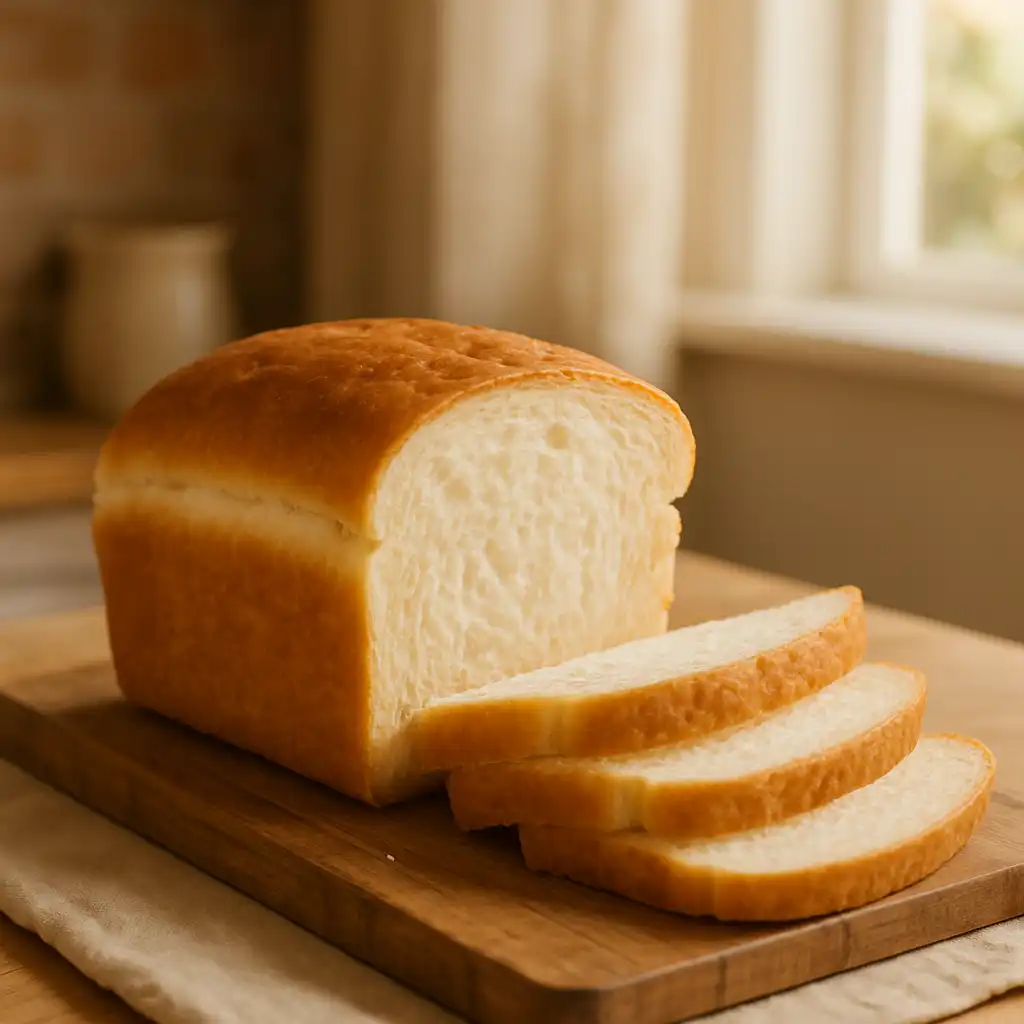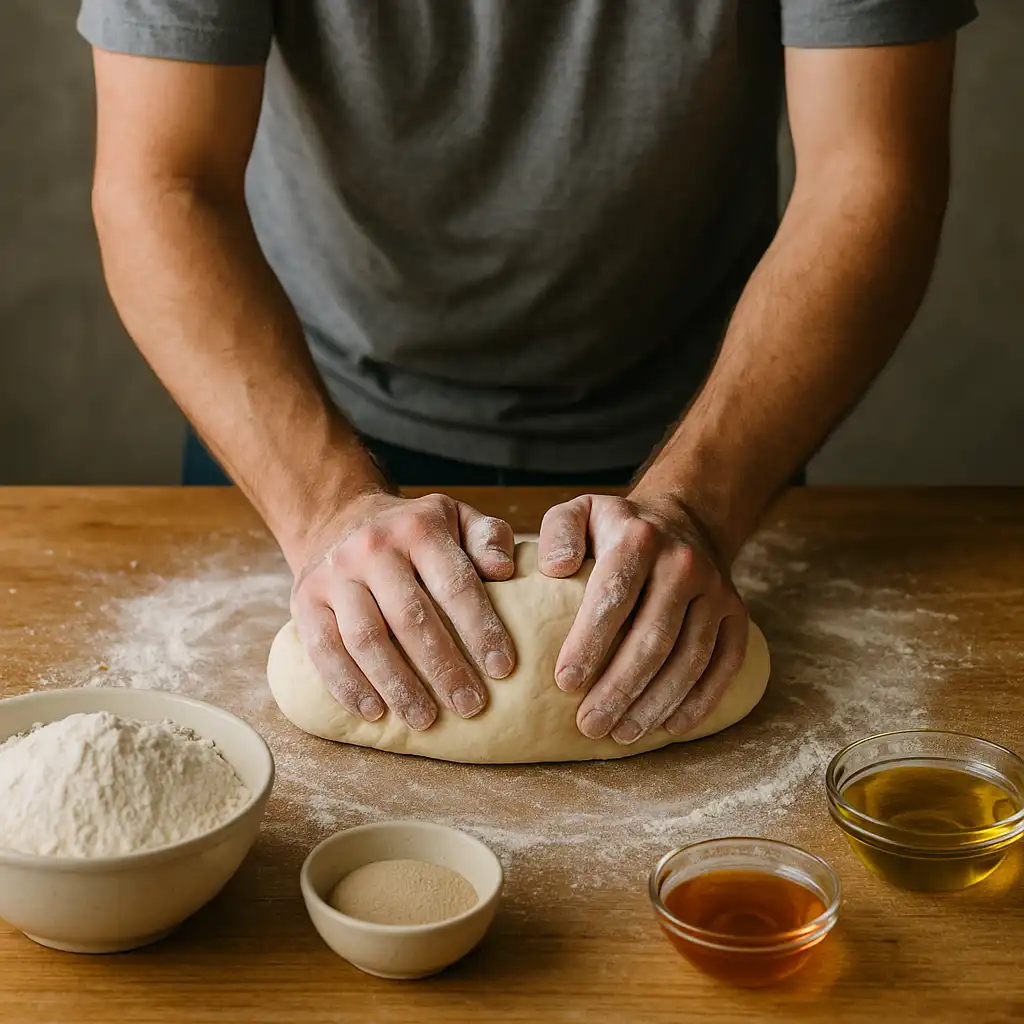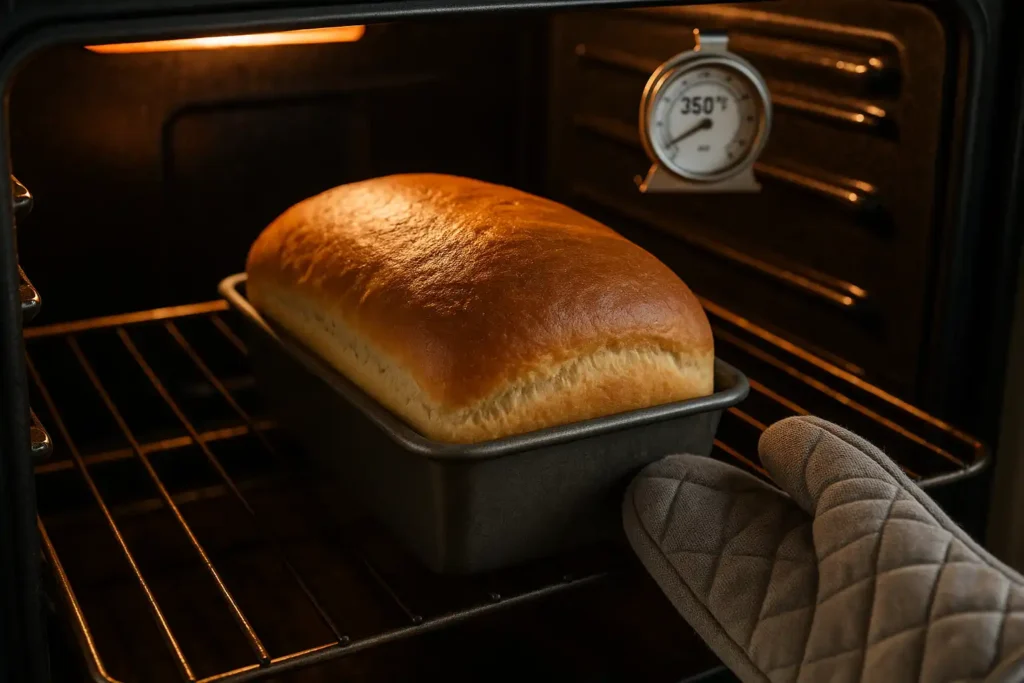Introduction to Sandwich Bread
What is Sandwich Bread?
When you think about the perfect sandwich bread recipe, what comes to mind? Usually, it’s a soft, fluffy loaf with a delicate crumb that holds together all your favorite fillings without falling apart. Sandwich bread is specifically designed to be tender and easy to slice, making it ideal for everything from a classic ham and cheese to gourmet avocado toasts. Unlike crusty artisan breads, sandwich bread offers that satisfying softness and mild flavor that really lets the sandwich shine.
Why Make Homemade Sandwich Bread?
Sure, you can buy sandwich bread at any store, but why settle for mass-produced loaves when homemade bread delivers so much more? Making your own bread means customizing every aspect—from ingredients and texture to freshness. Plus, it’s easier than you think! Imagine the aroma of fresh bread filling your kitchen or impressing friends with your baking skills. For inspiration on crafting exceptional loaves, check out a classic sandwich bread recipe or explore tips for soft sandwich bread that will elevate your homemade creation.
Essential Ingredients for Sandwich Bread
Flour Types: All-Purpose, Bread, and Whole Wheat
Choosing the right flour is like picking the perfect paint for your canvas. Most sandwich bread recipes call for either all-purpose flour or bread flour. Bread flour contains more protein, making it perfect for stronger gluten structure and a chewier texture. On the other hand, all-purpose flour offers versatility and a lighter crumb. For a healthier twist, many bakers blend in whole wheat flour, adding earthiness and nutrients but slightly denser texture. If you want to dive deeper, this guide on basic homemade bread ingredients explains the roles of different flours beautifully.
Role of Yeast, Salt, and Sweeteners
No yeast bread recipe can succeed without its trusty trio: yeast, salt, and sweeteners. Yeast is the magical leavening agent that makes your dough rise, creating that airy structure you crave. Salt not only controls yeast activity but also enhances flavor, while sweeteners like sugar or honey, add tenderness and help the crust brown nicely.
Importance of Fats: Butter, Olive Oil, and Alternatives
Fats like butter or olive oil soften crumbs and extend loaf freshness. Butter imparts richness and tenderness, while olive oil gives a subtle fruity flavor and moist texture. For those looking for alternatives, plant-based oils or vegan butter can step in without sacrificing softness.
Step-by-Step Guide to Making Sandwich Bread
Preparing the Dough: Mixing Ingredients
Start by warming your liquid—usually water or milk—until it’s comfortably warm, about 100–110°F. Mix in your yeast with a pinch of sugar and let it bloom until bubbly. Meanwhile, combine your flours, salt, and sweetener in a large bowl. Slowly add the wet ingredients along with your chosen fat and mix until the dough starts coming together. The goal here is a smooth yet slightly tacky dough, like a slightly damp sponge. If you want a visual guide, try the simple soft bread recipe for an easy-to-follow approach.

Kneading Techniques: By Hand and Stand Mixer
Kneading is the step where the dough transforms, developing gluten strands that give bread its structure. You can knead by hand, pressing and folding the dough for around 10 minutes until it’s stretchy and smooth—like a velvety pillow. Or, if you have one, use a stand mixer fitted with a dough hook to do the heavy lifting. This takes about 6–8 minutes and can save your arms quite a bit of work. Regardless of method, look for dough that springs back when poked softly.

Proofing and Rising: Tips for Perfect Dough
This is where patience really pays off. Place your dough in a lightly oiled bowl, cover with a clean towel or plastic wrap, and set it somewhere warm and draft-free. The dough should double in size, usually within 1–2 hours depending on temperature and yeast activity. Proper proofing ensures your bread is airy and soft. If you want to know more about perfect proofing dough techniques, this guide to homemade loaves has excellent tips.
Shaping and Second Rise
Once the dough has risen, punch it down gently to release excess air. Shape it into a loaf by rolling or folding, then place it into a greased loaf pan. Cover and let it rise again for 45 minutes to an hour until it puffs up nicely.
Baking Instructions and Tips
Preheat your oven to around 350°F (175°C). Bake the loaf for 30-35 minutes until the crust turns golden and sounds hollow when tapped. For a softer crust, brush the top with melted butter right after baking. Remember, every oven is different, so keep an eye near the end!

Tips for Achieving Soft and Fluffy Sandwich Bread
Using Honey or Sugar for Tenderness
Including honey or sugar isn’t just for sweetness. These sweeteners act like little moisture magnets in your dough, contributing to a tender crumb that lasts longer.
Balancing Water and Fat Content
The ratio of liquid to fat in your bread dough is key. Too little water yields a dense loaf; too much can make the dough sticky and unmanageable. Likewise, fats like butter and olive oil add richness and softness, enhancing overall crumb texture.
Proper Kneading and Rising Times
Over or under-kneading can seriously affect bread softness. Enough kneading develops gluten properly, ensuring your bread will rise well. Similarly, allowing your dough to rise fully, but not more than double, provides the perfect air pocket balance.
Baking Temperature and Crust Softening Methods
Baking at moderate heat (350°F) helps achieve a golden crust without being too tough. To soften crust, brush melted butter on fresh loaves or cover with foil during the last few minutes of baking.
Variations of Sandwich Bread Recipes
Whole Wheat vs. White Sandwich Bread
Whole wheat breads bring hearty flavor and fiber but often yield a denser crumb compared to white breads. Mixing white and whole wheat flour can balance taste and softness beautifully. More on this can be found in the whole-wheat flour sandwich bread resources.
No-Knead Sandwich Bread Recipes
Short on time or energy? No-knead recipes let the dough rest longer to develop gluten naturally, bypassing the tough kneading step. Give the no-knead sandwich bread method a try for an effortless loaf.
Dairy-Free and Egg-Free Options
You can easily substitute dairy with plant-based oils and choose egg substitutes or omit eggs entirely for allergy-friendly egg free bread varieties. These alternatives still create soft, fluffy bread without compromising flavor.
Storing and Shelf Life of Homemade Sandwich Bread
How to Store Bread for Freshness
Keep your homemade loaf covered in a cloth or bread box to maintain moisture without encouraging mold. Avoid plastic bags unless freezing. Storing at room temperature will keep your bread fresh for 2 to 4 days, perfect for daily sandwiches.
Freezing and Thawing Tips
For longer storage, slice and freeze your bread wrapped tightly in plastic wrap and foil to prevent freezer burn. To thaw, leave slices at room temperature or toast them straight from the freezer for a fresh-from-the-oven experience that fits your schedule.
Common Mistakes to Avoid When Making Sandwich Bread
Dough Too Sticky or Dry
If your dough sticks excessively, add flour a tablespoon at a time. If too dry, incorporate a bit more water or milk gradually. Finding the right dough consistency is your first win.
Under or Over Proofing Dough
Under-proofed dough leads to dense bread; over-proofed dough collapses under its own weight. A good rule is to let it double in size—not more.
Baking Issues: Overbaking or Underbaking
Baking too long dries out bread while underbaking results in gummy interiors. Use a timer and test by tapping the loaf for a hollow sound.
Frequently Asked Questions about Sandwich Bread Recipe
What ingredients are needed for sandwich bread?
At its core, a sandwich bread recipe contains flour (all-purpose, bread, or whole wheat), yeast, salt, water or milk, a sweetener such as sugar or honey, and fat like butter or olive oil. These ingredients work in harmony to create a soft crumb and flavorful crust. Some recipes may include eggs or milk powder for extra richness, but these aren’t essential. For detailed ingredient info, you might check out sources on basic homemade bread ingredients.
How do you make homemade sandwich bread step by step?
Start by activating yeast in warm water with a touch of sugar. Next, mix your dry ingredients and add liquids and fats. Knead the dough until smooth and elastic, then let it rise until doubled. After punching down, shape the dough into a loaf, allow a second rise, then bake at 350°F (175°C) until golden. Let cool before slicing. For a no-fuss version, explore the no-knead sandwich bread method.
What makes sandwich bread soft and fluffy?
The secret for soft bread lies in proper hydration, fat content, and gentle handling. Sweeteners like honey attract moisture, fats tenderize the crumb, and adequate proofing creates airiness. Kneading develops gluten that traps air bubbles, essential for fluffiness. Baking at the right temperature with some post-bake butter brushing keeps the crust soft.
Can I use whole wheat flour instead of white flour?
Yes! But note that 100% whole wheat bread tends to be denser and heavier. To keep a soft texture, you can blend whole wheat with white or bread flour. Whole wheat imparts earthier flavor and higher fiber content. For healthy options and recipe ideas, see the whole-wheat flour sandwich bread page.
Do I need a bread machine or can I knead the dough by hand?
You definitely do not need a bread machine. Hand kneading is traditional and satisfying, requiring just your hands and about 10 minutes of effort. Stand mixers are a great helper if you have one, but many recipes—including no-knead bread—are designed to skip kneading altogether, making bread baking accessible to all.
How long does homemade sandwich bread last?
Fresh homemade bread keeps well at room temperature for 2 to 4 days when stored properly in a bread box or wrapped in a cloth. For longer life, freezing is the best option—wrapped tightly and sliced for easy use. Avoid refrigeration as it speeds up staleness. Refer to the storing section above for more tips.
Is it possible to make sandwich bread without eggs or dairy?
Absolutely! Many dairy free bread and egg free bread recipes substitute butter with plant oils like olive oil and skip eggs altogether. Using plant-based milks or just water works well, too. These alternatives still yield a soft, delicious sandwich loaf suitable for those with allergies or dietary preferences.
Ready to elevate your meals? Start your day with energy and flavor by pairing your homemade bread with nutritious and delicious pairings, or explore how homemade bread complements a nourishing choice with many benefits.
Conclusion
Homemade sandwich bread recipe success is absolutely within your reach, thanks to simple, wholesome ingredients and straightforward techniques. By understanding flours, yeast activity, fats, and proper proofing times, you can bake a soft, fluffy loaf perfect for everyday sandwiches. Don’t hesitate to experiment with whole wheat, no-knead styles, or dairy-free options to suit your needs. Keep your bread fresh longer with proper storage and freezing techniques. Avoid common pitfalls like incorrect dough hydration and baking times to always enjoy a delightful crumb. So, what are you waiting for? It’s time to roll up your sleeves and start baking—exchanging store-bought loaves for the rich, warm satisfaction of fresh, homemade sandwich bread!

2 thoughts on “Sandwich Bread Recipe: How to Make Soft & Fluffy Homemade Bread”